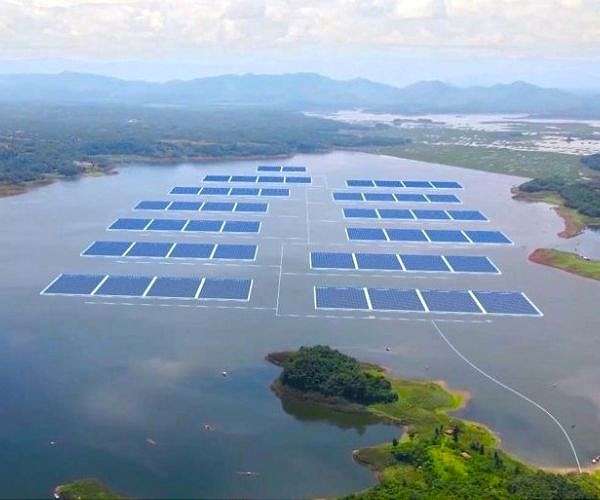Floating solar panels could advance U.S. energy goals
Federal reservoirs have the potential to contribute significantly to meeting the nation’s solar energy needs, according to a recent study published in Solar Energy.
Geospatial scientists Evan Rosenlieb and Marie Rivers, along with Aaron Levine, a senior legal and regulatory analyst at the U.S. Department of Energy’s National Renewable Energy Laboratory (NREL), conducted the first comprehensive analysis to determine the energy potential of floating solar panel projects at the federal level. quantify. private or regulated reservoirs. Their findings show that these reservoirs could support floating solar panels that could generate up to 1,476 terawatt hours of energy annually – enough to power about 100 million homes.
“That is a technical potential,” Rosenlieb explained, clarifying that this figure represents the maximum possible energy generation if each reservoir were fully utilized for floating solar panels. “We know we can’t develop all of this. But even if you could develop 10% of what we’ve identified, that would go a long way.”
Although the study does not yet consider the potential impact of human and wildlife activities on floating solar development, the researchers plan to address these factors in future work. This improved data provides critical insights that can streamline project planning and help evaluate how floating solar fits into the country’s energy strategy.
Floating solar panels, or floating PV, offer several advantages. In addition to generating electricity without consuming land resources, they provide cooling and shade for water bodies, reducing evaporation and conserving water supplies. However, large-scale installations remain absent in the US, with no projects exceeding 10 megawatts.
Levine noted the challenges and opportunities: “We haven’t seen any large-scale installations yet, like a large reservoir. In the United States, we don’t have a single project over 10 megawatts.”
Previous attempts to estimate the energy potential of floating solar panels in the US lacked the detailed analysis of this study, which assesses the suitability of reservoirs based on factors such as water conditions and infrastructure requirements. For example, reservoirs with frequent vessel traffic, extreme temperatures, or steeply sloping bottoms can pose challenges for floating solar installations. However, some hydropower reservoirs could serve as excellent locations for hybrid energy systems that combine solar and hydropower, increasing the reliability and resilience of the electricity grid.
The researchers also highlighted the potential of new reservoirs created for pumped storage hydropower projects. These reservoirs, which are often isolated from natural waterways, could serve as ideal locations for floating solar panels because they have no impact on existing ecosystems or human activities.
Future studies will assess additional factors such as proximity to transmission lines, site-specific development costs, and regulatory considerations. The researchers also plan to expand their analysis to smaller reservoirs, estuaries and ocean locations.
Research report:Floating Photovoltaic Engineering Potential: A Novel Geospatial Approach to Federally Controlled Reservoirs in the United States


